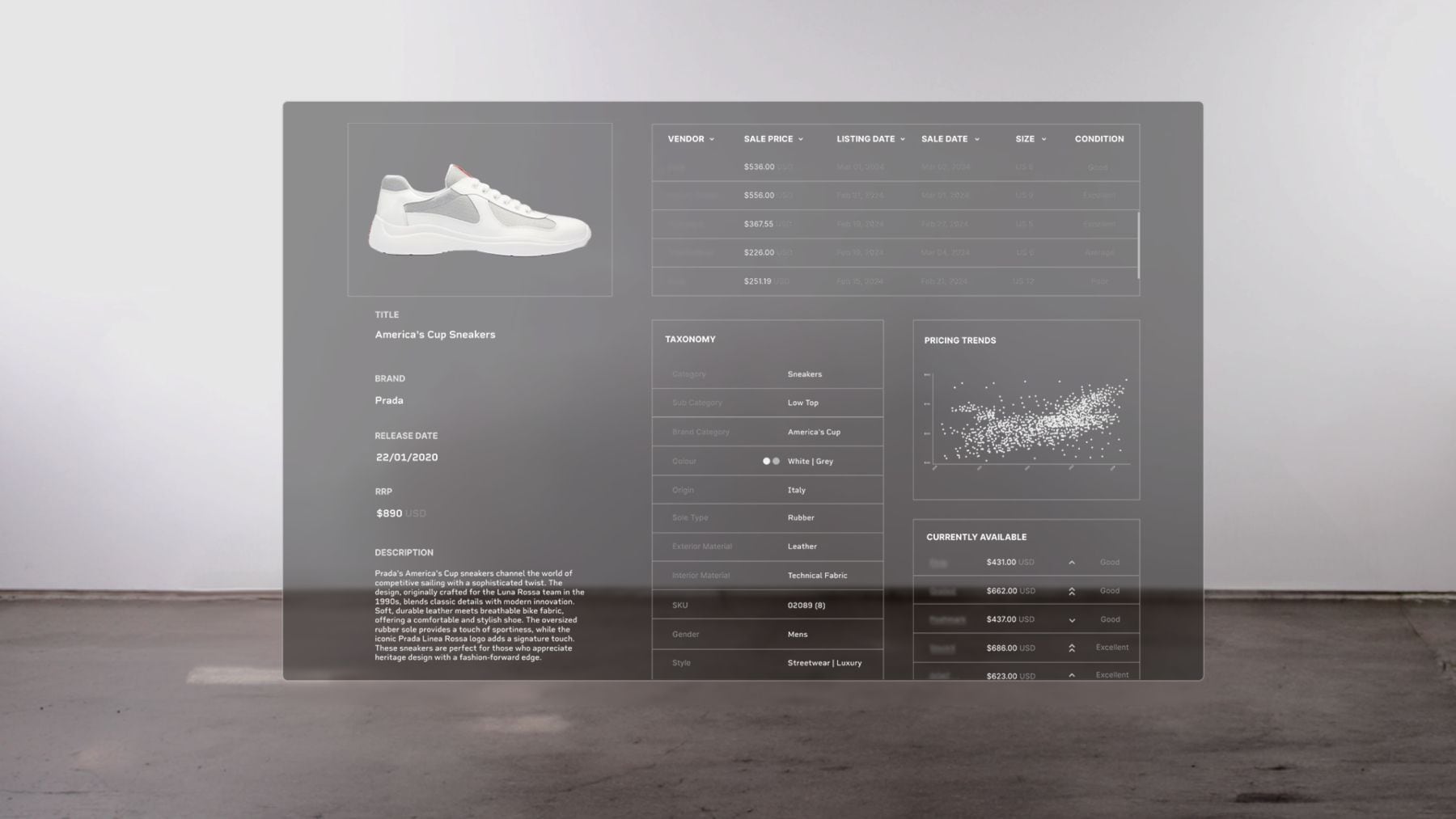
If you want to sell a Helmut Lang jacket on a resale site, you have to photograph it, write out a description and price it, which isn’t always straightforward. There are different levels of value for a Helmut Lang jacket designed by Lang himself, one designed by an anonymous studio team after his departure and one designed recently by new creative director Peter Do, even though they all carry the same label.
For resale businesses, the manual work involved, including inputting product details and research to determine the best price, can contribute to high operating costs that strain profitability. For peer-to-peer marketplaces, the effort can be a deterrent to sellers seeking easy cash from items they no longer wear.
The tech start-up Truss says it has a solution, and it’s getting the chance to prove it through a £1 million ($1.27 million) grant from the UK government’s innovation agency as well as support from Depop, Selfridges and The University of Warwick. The idea is that, using artificial intelligence, Truss can identify any garment just from a picture, provide full product details and say what it typically sells for online and how long previous listings have sat based on data scraped from resale sites.
Secondhand companies have tried to automate some of this work for years. The RealReal has invested in automating tasks like copywriting and pricing. Ebay lets users type in the title of an item and suggests listing details, including a selling price.
Truss, however, wants to build a data infrastructure for the entire secondhand market that users tap into with only a photo.
“We are providing them an opportunity to test some of this stuff in the wild,” said Alice Jacques, Depop’s director of machine learning.
The idea of being able to quickly identify any fashion item simply through a photo has become increasingly feasible with advances in the AI fields of machine learning and computer vision. They’ve figured into innovations from self-driving cars to Google Lens, which now lets users snap a picture of any fashion item and locate it, or at least something visually similar, online.
Truss effectively works on the same idea, but instead of searching the internet for a match it searches its fast-growing database of fashion items, which already totals more than 50 million products, some dating back decades, according to Woody Lello, Truss’ co-founder and chief executive. It started out using off-the-shelf AI software for the job, but those algorithms have shortcomings, like struggling to identify something as the same garment if it’s on a hanger in one picture and laid out on the floor in another. With the money from the grant, Truss is building proprietary algorithms.
Its biggest challenge, though, is building up that product database. It needs images of every item it hopes to identify as well as product details. Selfridges and Depop are providing some information, but Truss also scrapes websites and has direct plug-ins with other partners. All product images need to be tagged properly, too. The company uses a mix of AI and a worker service in Ghana that Jackson said is there to do quality assurance. The workers make sure photos identified as the same product are indeed the same item, and that the tagging is correct.
For Depop, the hope is that Truss’ technology could help its users and further some goals Depop is pursuing behind the scenes. Jacques noted that Depop sellers are frequently on Reddit asking questions about an item’s rarity to know how to price it, and many feel intimidated by the blank page they face when they have to describe a product. It wants to smooth that process, potentially even getting to the point of one-click listings, though it’s working out how it might do that without sellers losing their individual tone of voice.
Depop is also constantly working to improve its ability to surface the right items in shoppers’ searches. Its algorithms rely on behavioural data from its users and data from the listings themselves, but while it has a handle on the behavioural data, it still has work to do on the listing data, Jacques said. The way sellers label and describe their products can vary greatly, as can two images of the same item. Given that the company has about 34 million products in its catalogue, it results in a huge amount of unstructured data. Truss’ more standardised data could be a valuable complement.
Selfridges would have its own potential uses for the technology. The retailer has embarked on an ambitious plan to have 45 percent of transactions come from products made with recycled materials or from services like resale, repair or refills. (In 2022, less than one percent of transactions came from those sources.) But as its resale business scales, so does the work that comes with it. Selfridges is counting on Truss to make the process more efficient.
With high-end items, there’s also valuable additional context that doesn’t apply to mass-market items, like the season they’re from or which celebrities wore them, Lello said. Filling in the correct information and pricing it accordingly takes time, which equates to costs.
“We can provide all of that rich information instantly, meaning that someone listing the products would no longer have to do that,” said Felix Jackson, Truss’ chief operating officer and another of its co-founders. (There are four total).
Truss will have the opportunity to prove that claim to its partners, and Lello said he also hopes the company can find a place in the ecosystem of companies building digital product passports for fashion items. The project is gathering urgency as the EU looks set to mandate these digital identities amid a bigger move toward ensuring greater traceability and transparency in industries like fashion. Those efforts all focus on new products. Truss wants to extend a similar notion to millions of items already circulating in the marketplace.



